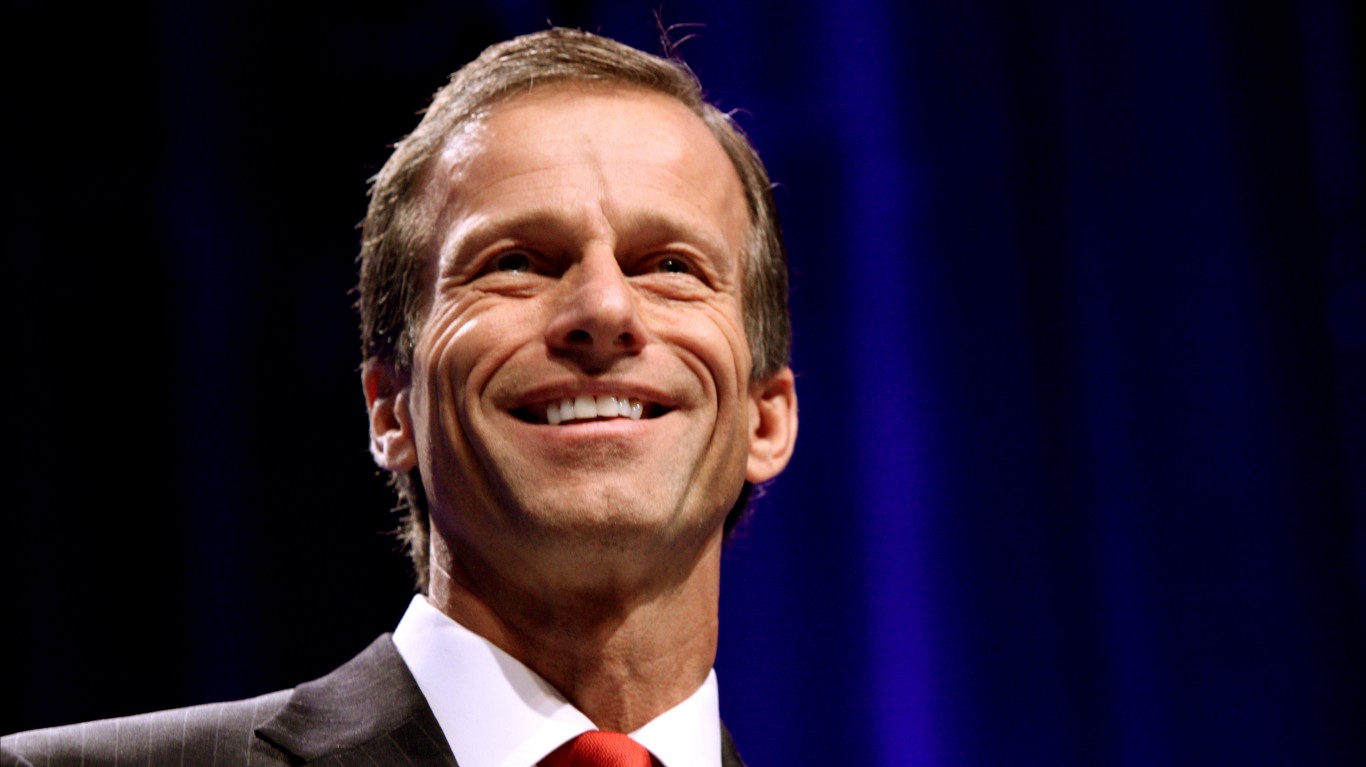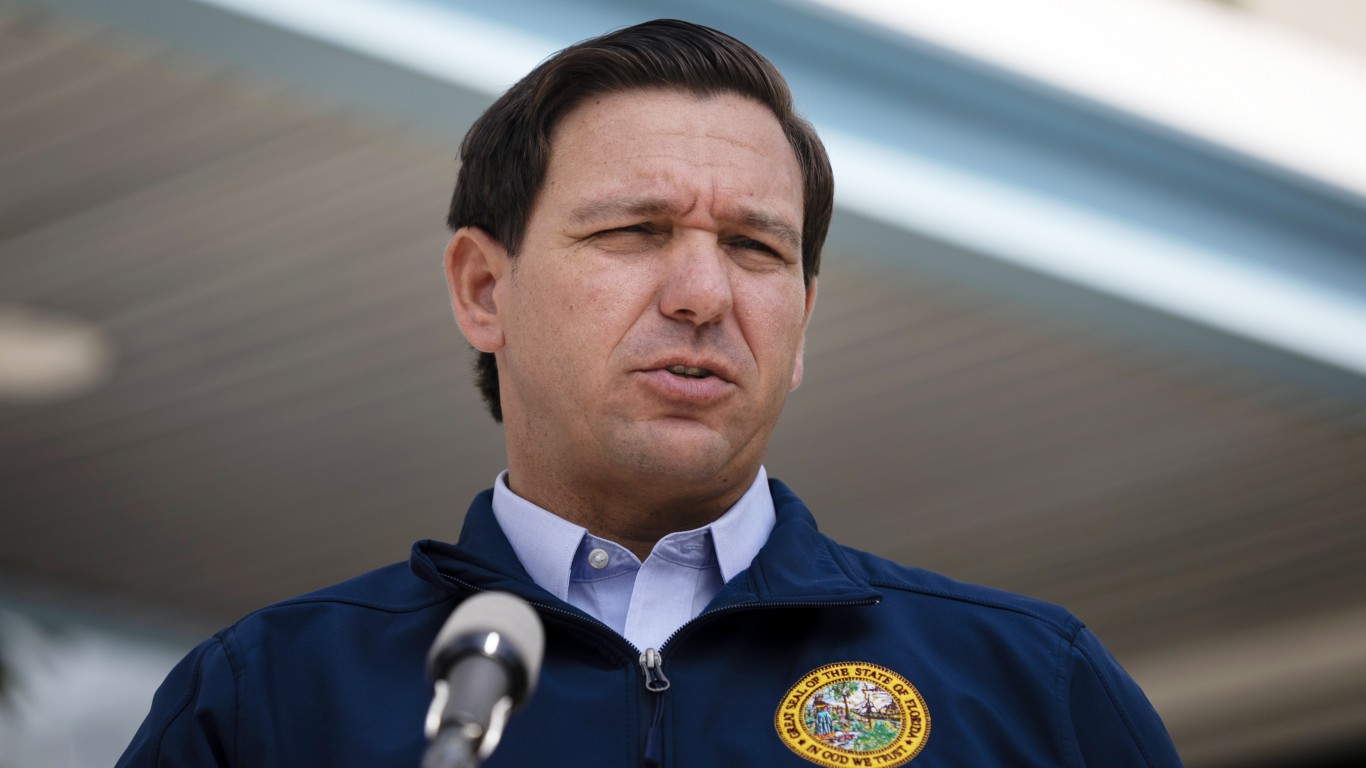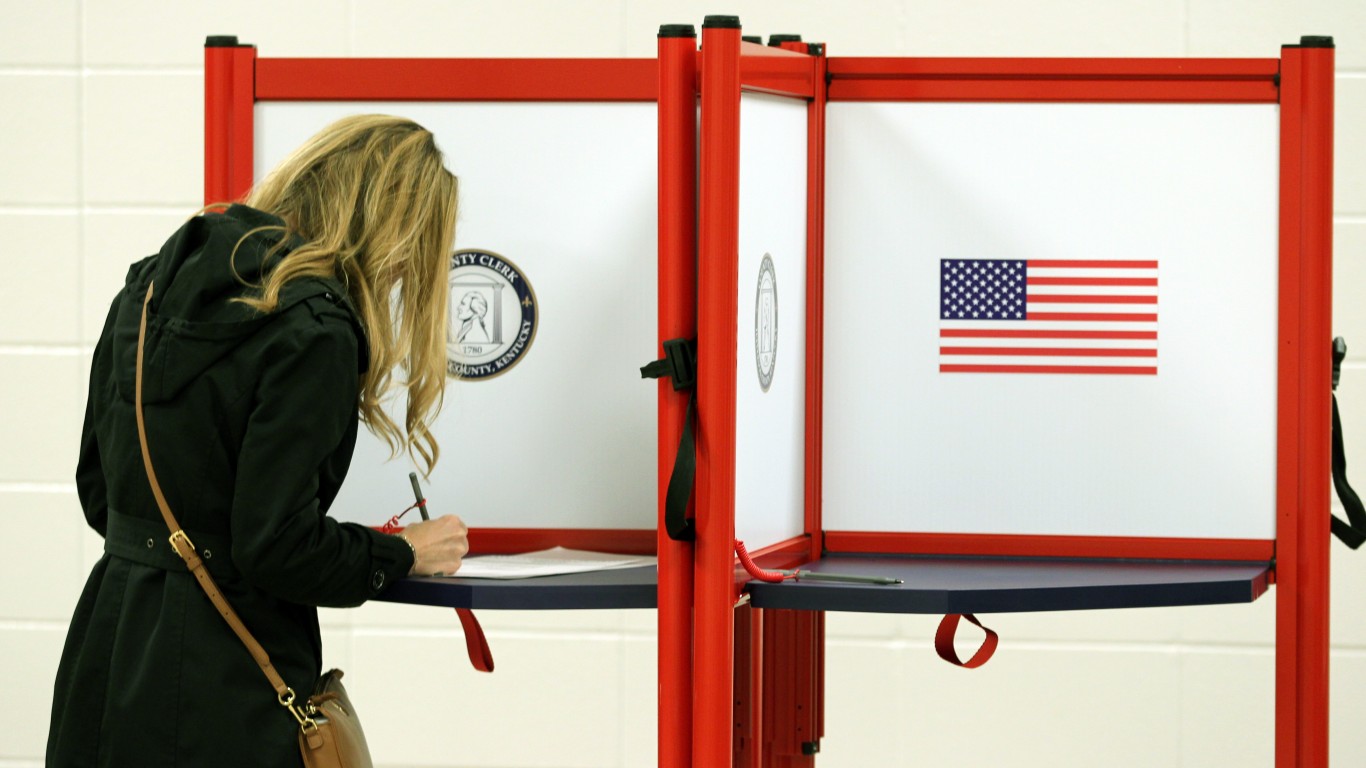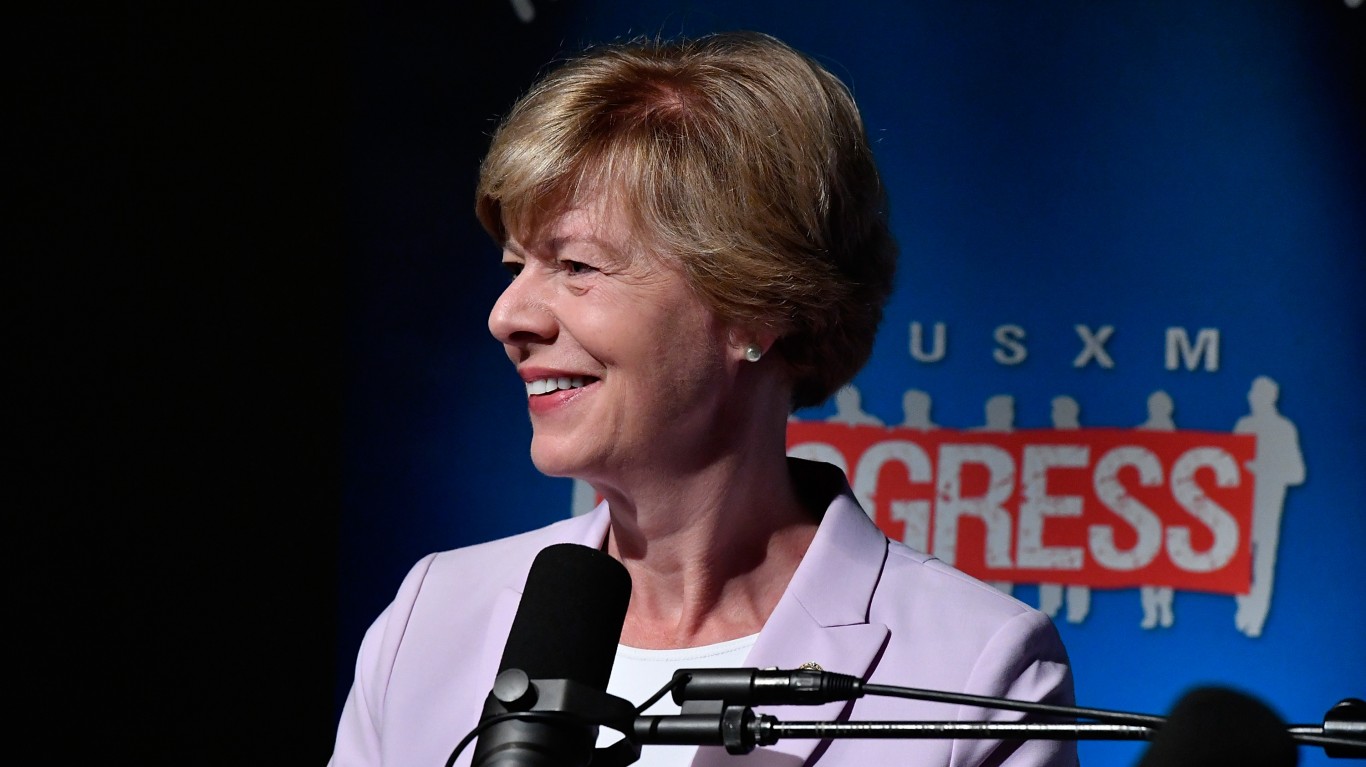
The first year of Joe Biden’s presidency has been tumultuous. The botched military withdrawal from Afghanistan, a stalled legislative agenda, and soaring inflation have all contributed to sinking poll numbers for the president and his administration. But while public confidence in the executive branch has eroded over the difficult year, many U.S. senators have enjoyed a surge in popularity over the same period.
According to polling data collected by public opinion research company Morning Consult, two dozen U.S. senators have seen their approval ratings climb by at least 2 percentage points in the first year of Biden’s presidency – three of them by double digits.
Using survey data from Morning Consult, 24/7 Wall St. identified the U.S. senators who are gaining popularity. Our list includes all 24 senators whose approval rating climbed by 2 percentage points or more from the first quarter of 2021 to the first quarter of 2022.
Though public opinion polls only reflect the sentiment of voters in the state a given senator represents, some of the lawmakers on this list have received national attention lately for breaking ranks with their own party. These include Senator Mitt Romney (R) of Utah, who has laid blame for the storming of the Capitol on Jan. 6, 2021 at the feet of former President Donald Trump, as well as Senator Joe Manchin (D) of West Virginia, who did not support Biden’s Build Back Better legislation.
It is important to note that though every senator on this list is more popular with their constituents now than a year ago, many remain largely unpopular. Just over half of these senators have approval ratings below 50% – including Senate Minority Leader Mitch McConnell (R) of Kentucky, who has a 33% approval rating, the lowest in the chamber. Here is a look at the America’s least popular senators.
Nine of the 24 senators on this list are up for reelection this year, though two of them, Republican Sens. Pat Toomey of Pennsylvania and Richard Burr of North Carolina, are not seeking reelection. Despite the recent bump, both Toomey and Burr have some of the lowest approval ratings in the senate.
Click here to see the Senators who became more popular in the last year
Click here to read our detailed methodology
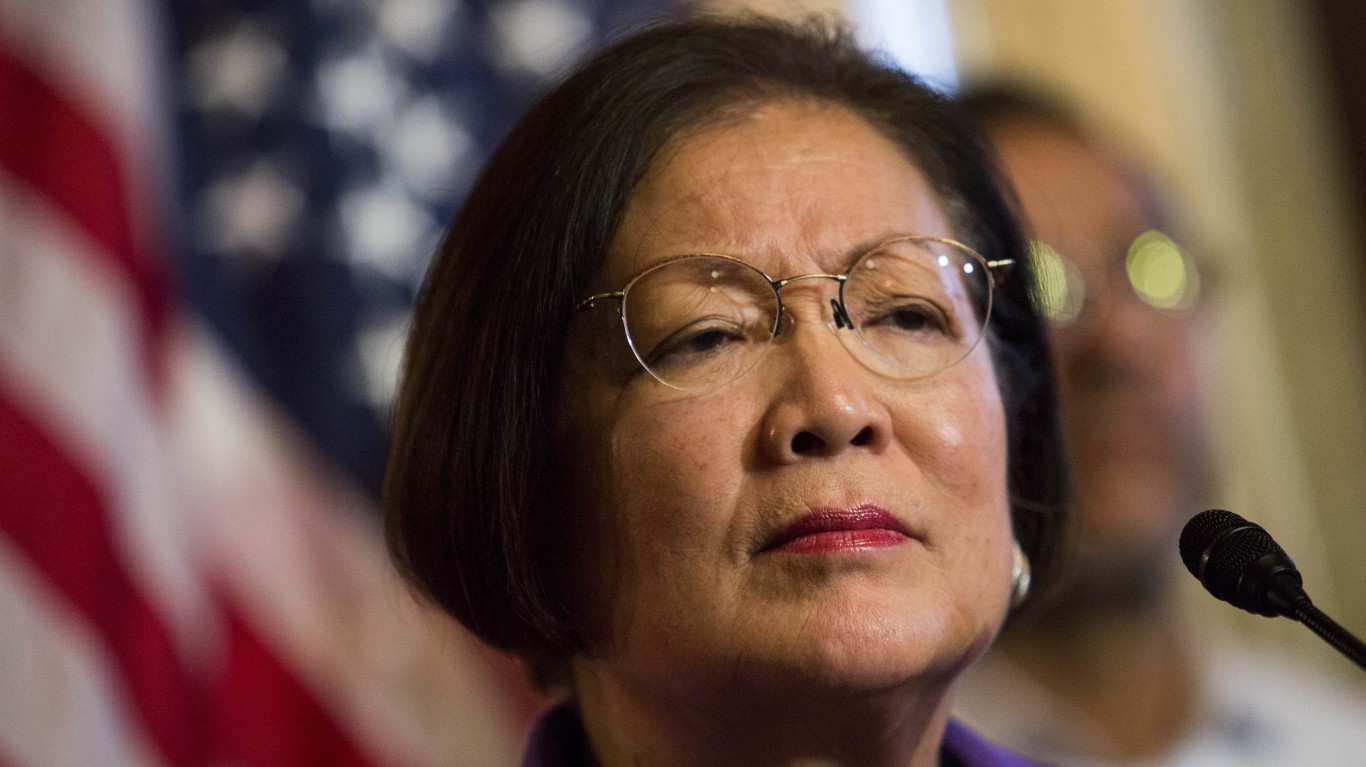
24. Senator Mazie Hirono of Hawaii (D)
> 1-yr. change in approval rating: +2 pct. points
> Q1 2022 popularity: 50% approve; 40% disapprove
> Q1 2021 popularity: 48% approve; 39% disapprove
> Current term ends: 2025
> Nov. 2020 voter participation in Hawaii: 59.7% (17th lowest)
[in-text-ad]

23. Senator Mitt Romney of Utah (R)
> 1-yr. change in approval rating: +2 pct. points
> Q1 2022 popularity: 48% approve; 43% disapprove
> Q1 2021 popularity: 46% approve; 45% disapprove
> Current term ends: 2025
> Nov. 2020 voter participation in Utah: 59.7% (16th lowest)
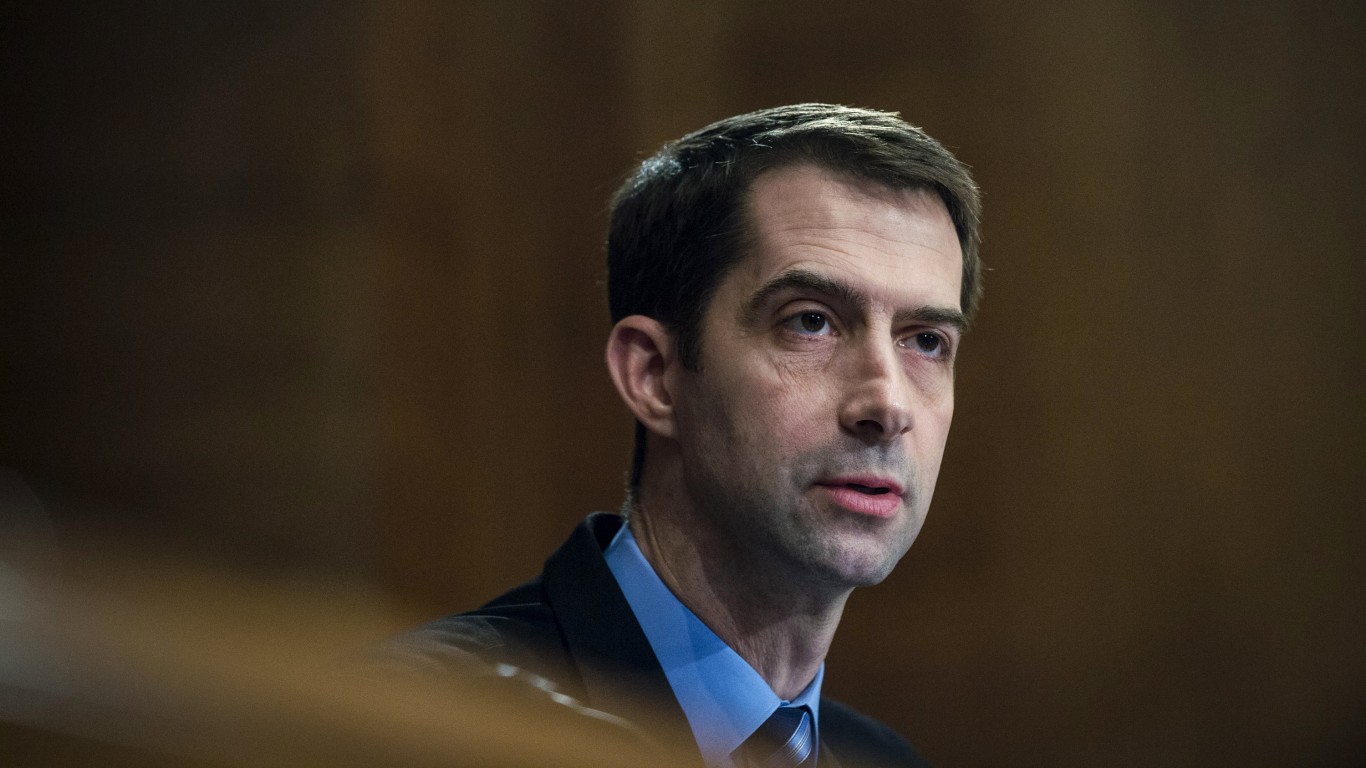
22. Senator Tom Cotton of Arkansas (R)
> 1-yr. change in approval rating: +2 pct. points
> Q1 2022 popularity: 54% approve; 31% disapprove
> Q1 2021 popularity: 52% approve; 35% disapprove
> Current term ends: 2027
> Nov. 2020 voter participation in Arkansas: 51.9% (the lowest)
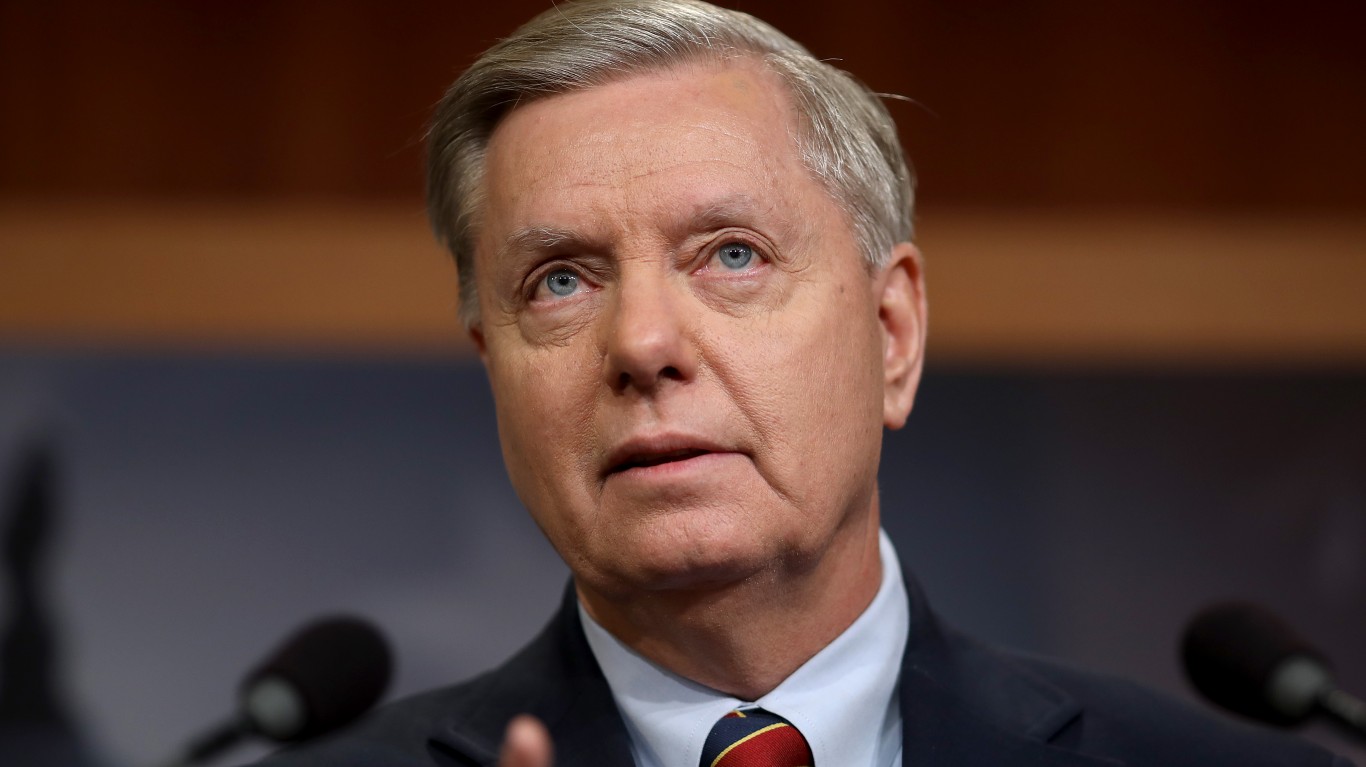
21. Senator Lindsey Graham of South Carolina (R)
> 1-yr. change in approval rating: +2 pct. points
> Q1 2022 popularity: 46% approve; 44% disapprove
> Q1 2021 popularity: 44% approve; 46% disapprove
> Current term ends: 2027
> Nov. 2020 voter participation in South Carolina: 61.3% (21st lowest)
[in-text-ad-2]
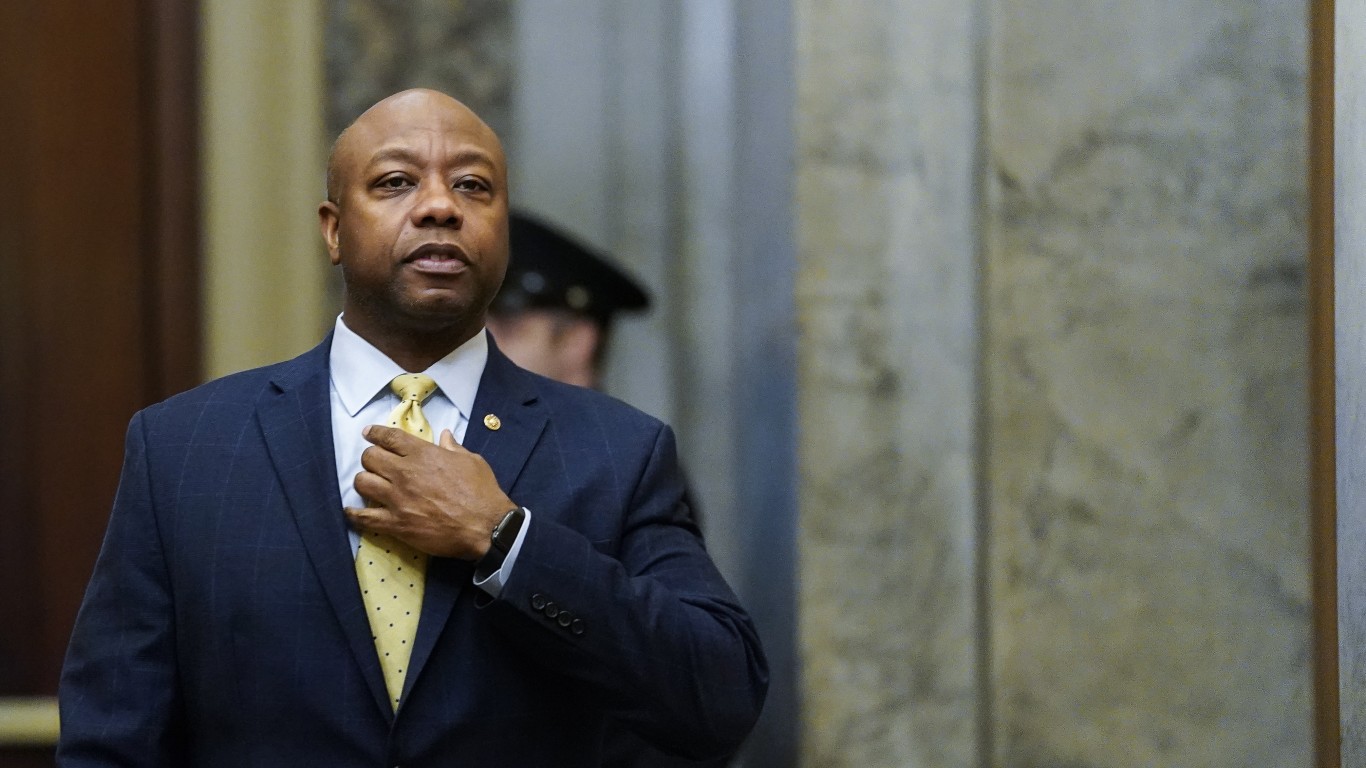
20. Senator Tim Scott of South Carolina (R)
> 1-yr. change in approval rating: +2 pct. points
> Q1 2022 popularity: 54% approve; 30% disapprove
> Q1 2021 popularity: 52% approve; 28% disapprove
> Current term ends: 2023 (seeking re-election)
> Nov. 2020 voter participation in South Carolina: 61.3% (21st lowest)
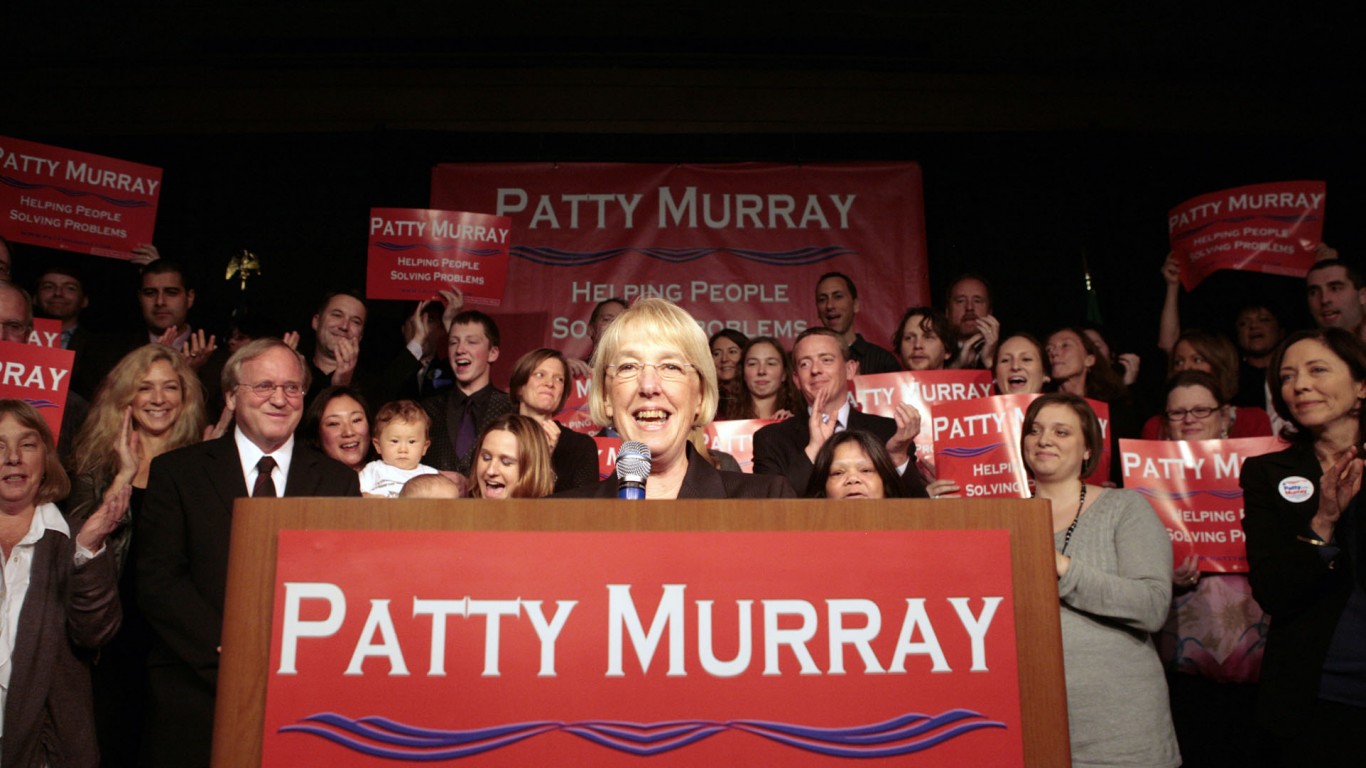
19. Senator Patty Murray of Washington (D)
> 1-yr. change in approval rating: +2 pct. points
> Q1 2022 popularity: 50% approve; 34% disapprove
> Q1 2021 popularity: 48% approve; 33% disapprove
> Current term ends: 2023 (seeking re-election)
> Nov. 2020 voter participation in Washington: 64.3% (19th highest)
[in-text-ad]
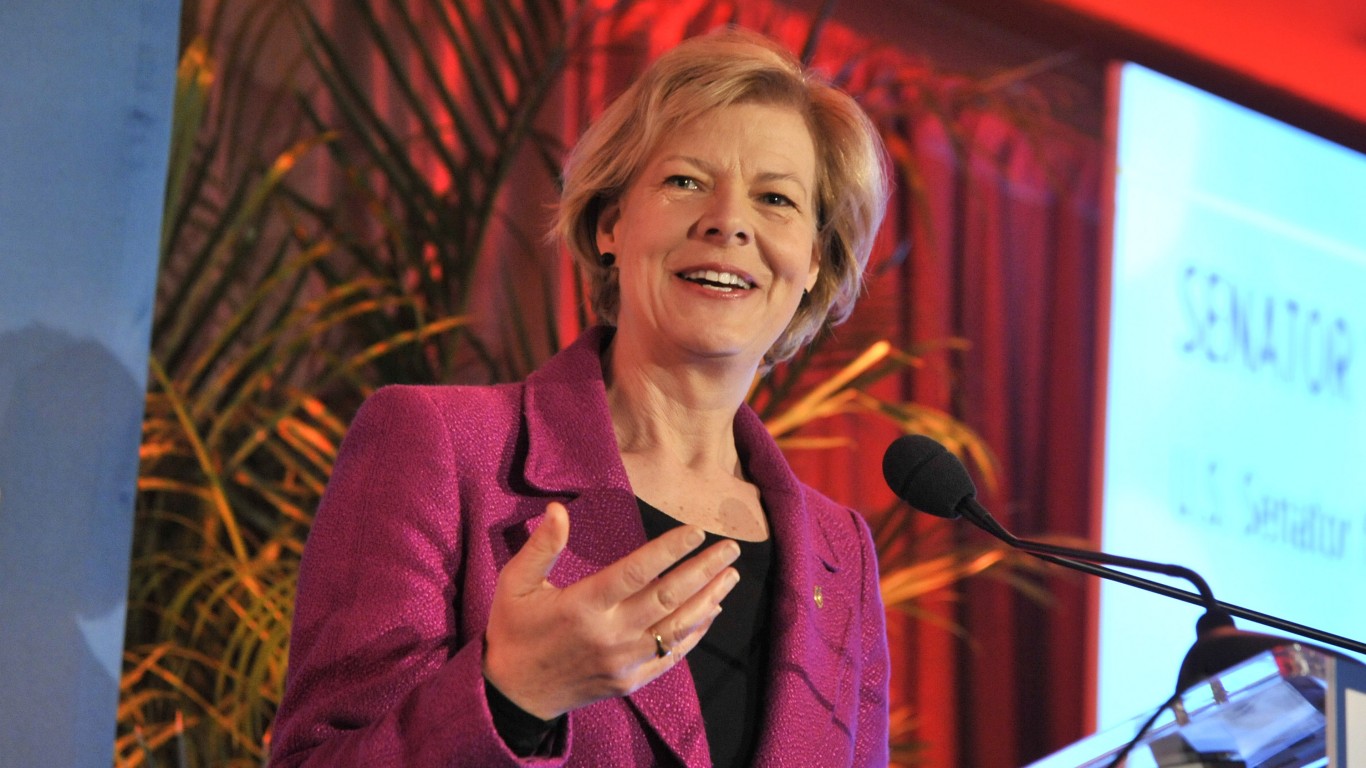
18. Senator Tammy Baldwin of Wisconsin (D)
> 1-yr. change in approval rating: +2 pct. points
> Q1 2022 popularity: 43% approve; 42% disapprove
> Q1 2021 popularity: 41% approve; 42% disapprove
> Current term ends: 2025
> Nov. 2020 voter participation in Wisconsin: 71.7% (4th highest)
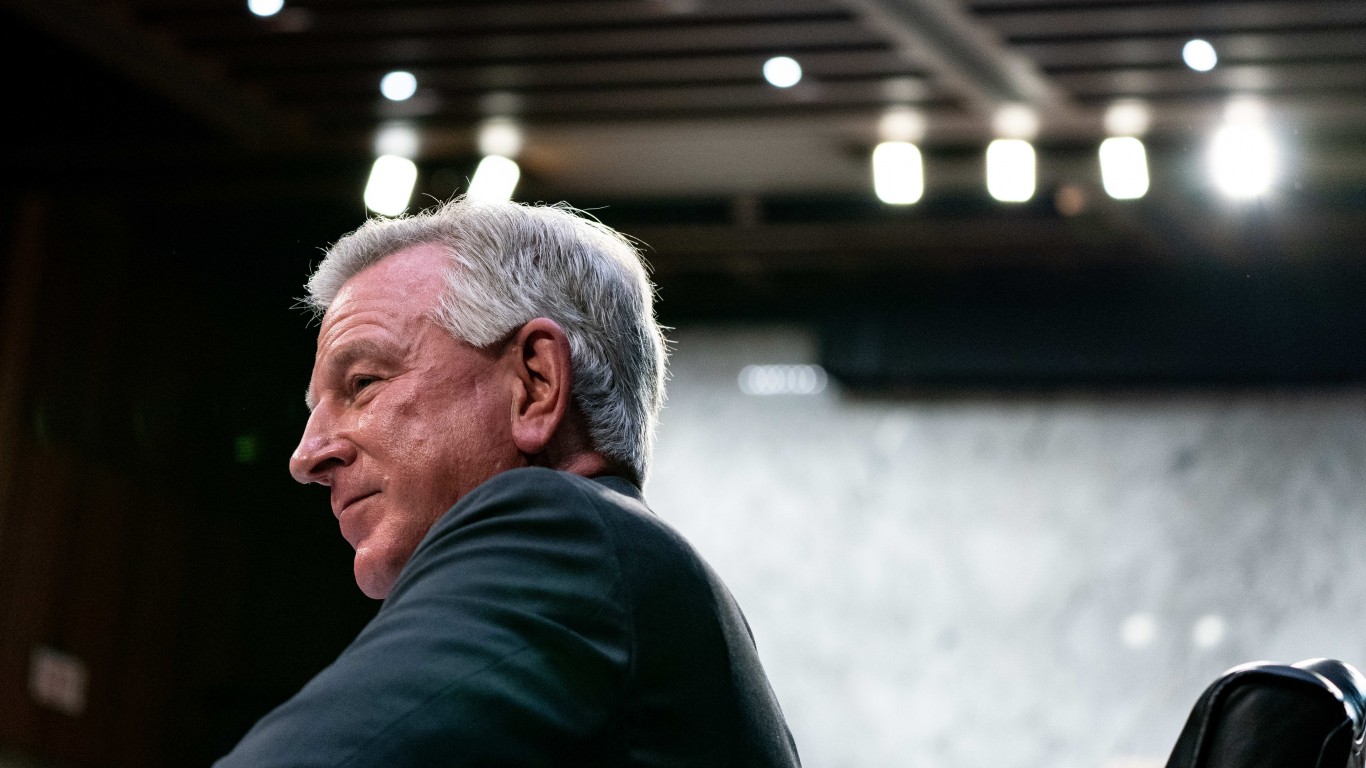
17. Senator Tommy Tuberville of Alabama (R)
> 1-yr. change in approval rating: +2 pct. points
> Q1 2022 popularity: 50% approve; 31% disapprove
> Q1 2021 popularity: 48% approve; 30% disapprove
> Current term ends: 2027
> Nov. 2020 voter participation in Alabama: 59.6% (15th lowest)
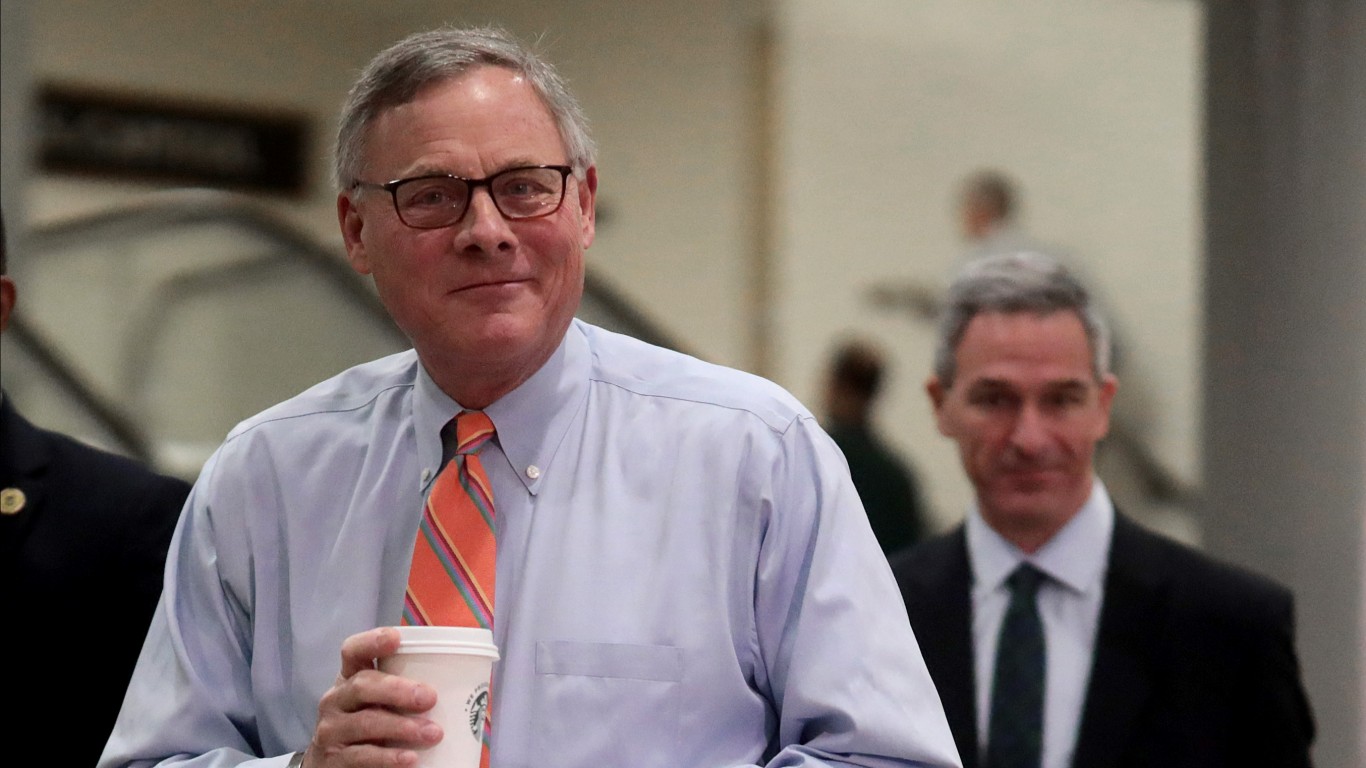
16. Senator Richard Burr of North Carolina (R)
> 1-yr. change in approval rating: +2 pct. points
> Q1 2022 popularity: 36% approve; 40% disapprove
> Q1 2021 popularity: 34% approve; 41% disapprove
> Current term ends: 2023 (Not seeking re-election)
> Nov. 2020 voter participation in North Carolina: 58.9% (11th lowest)
[in-text-ad-2]
15. Senator Patrick Toomey of Pennsylvania (R)
> 1-yr. change in approval rating: +2 pct. points
> Q1 2022 popularity: 36% approve; 43% disapprove
> Q1 2021 popularity: 34% approve; 45% disapprove
> Current term ends: 2023 (Not seeking re-election)
> Nov. 2020 voter participation in Pennsylvania: 68.2% (12th highest)
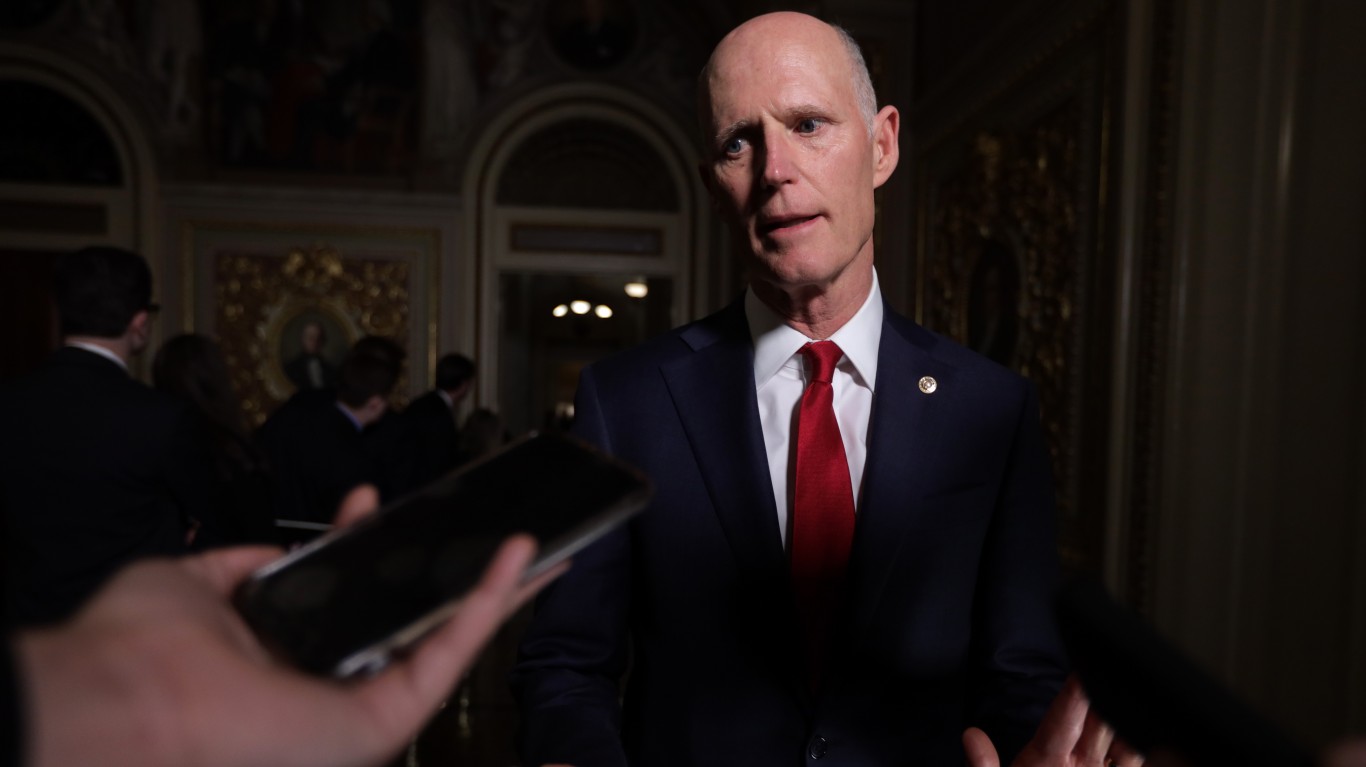
14. Senator Rick Scott of Florida (R)
> 1-yr. change in approval rating: +2 pct. points
> Q1 2022 popularity: 49% approve; 38% disapprove
> Q1 2021 popularity: 47% approve; 39% disapprove
> Current term ends: 2025
> Nov. 2020 voter participation in Florida: 56.4% (7th lowest)
[in-text-ad]
13. Senator Dan Sullivan of Alaska (R)
> 1-yr. change in approval rating: +3 pct. points
> Q1 2022 popularity: 48% approve; 37% disapprove
> Q1 2021 popularity: 45% approve; 38% disapprove
> Current term ends: 2027
> Nov. 2020 voter participation in Alaska: 62.4% (25th lowest)
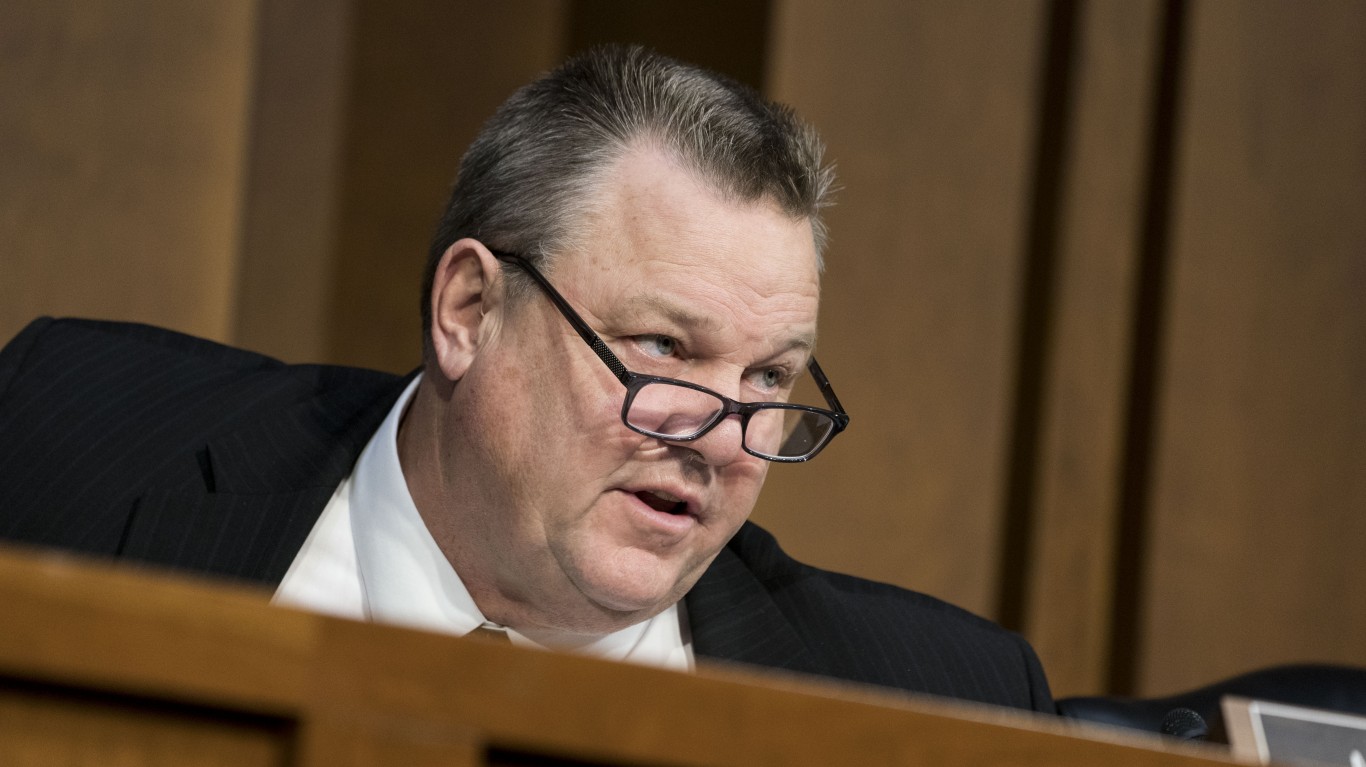
12. Senator Jon Tester of Montana (D)
> 1-yr. change in approval rating: +3 pct. points
> Q1 2022 popularity: 51% approve; 38% disapprove
> Q1 2021 popularity: 48% approve; 43% disapprove
> Current term ends: 2025
> Nov. 2020 voter participation in Montana: 72.6% (2nd highest)
11. Senator Martin Heinrich of New Mexico (D)
> 1-yr. change in approval rating: +3 pct. points
> Q1 2022 popularity: 47% approve; 33% disapprove
> Q1 2021 popularity: 44% approve; 30% disapprove
> Current term ends: 2025
> Nov. 2020 voter participation in New Mexico: 58.3% (10th lowest)
[in-text-ad-2]
10. Senator Catherine Cortez Masto of Nevada (D)
> 1-yr. change in approval rating: +3 pct. points
> Q1 2022 popularity: 44% approve; 40% disapprove
> Q1 2021 popularity: 41% approve; 37% disapprove
> Current term ends: 2023 (seeking re-election)
> Nov. 2020 voter participation in Nevada: 56.3% (6th lowest)
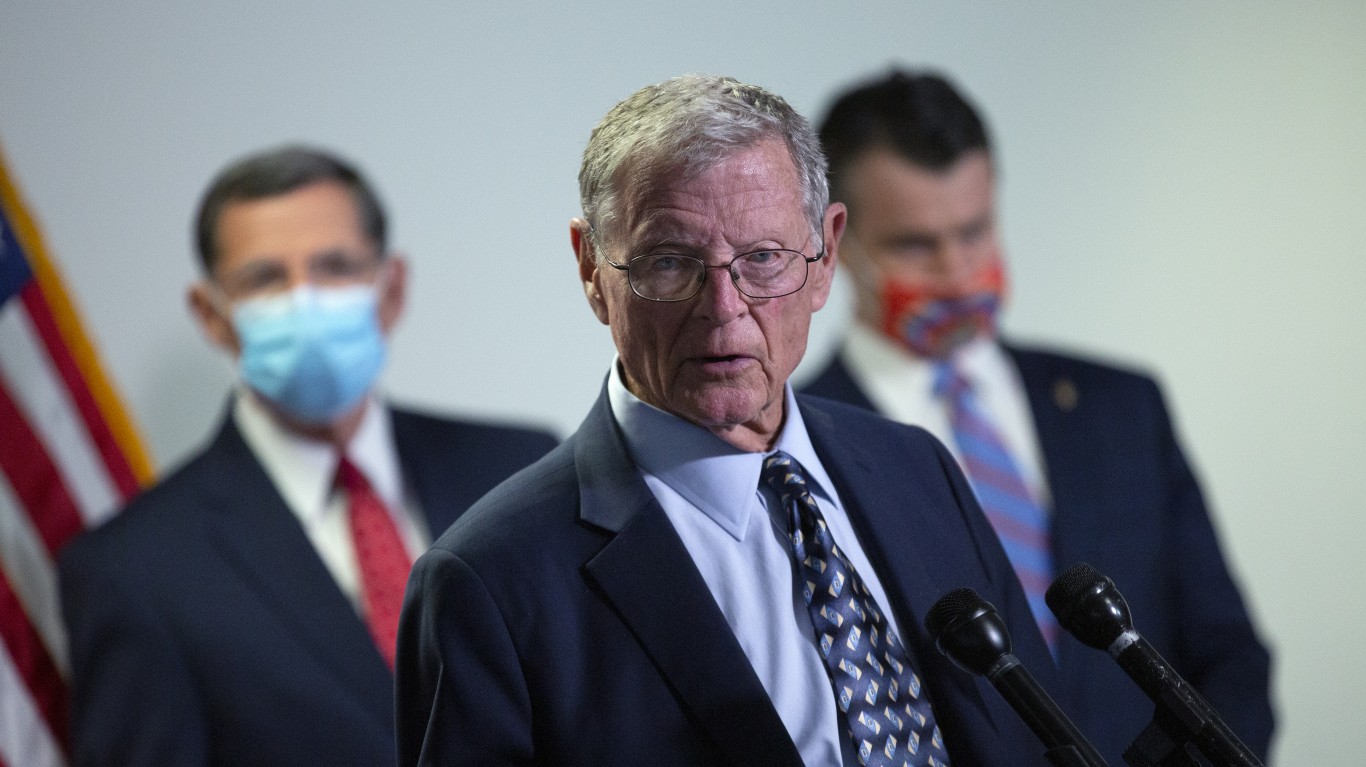
9. Senator James Inhofe of Oklahoma (R)
> 1-yr. change in approval rating: +3 pct. points
> Q1 2022 popularity: 53% approve; 31% disapprove
> Q1 2021 popularity: 50% approve; 32% disapprove
> Current term ends: 2027
> Nov. 2020 voter participation in Oklahoma: 55.5% (4th lowest)
[in-text-ad]
8. Senator Mitch McConnell of Kentucky (R)
> 1-yr. change in approval rating: +4 pct. points
> Q1 2022 popularity: 33% approve; 60% disapprove
> Q1 2021 popularity: 29% approve; 66% disapprove
> Current term ends: 2027
> Nov. 2020 voter participation in Kentucky: 65.3% (15th highest)

7. Senator Marco Rubio of Florida (R)
> 1-yr. change in approval rating: +4 pct. points
> Q1 2022 popularity: 52% approve; 37% disapprove
> Q1 2021 popularity: 48% approve; 38% disapprove
> Current term ends: 2023 (seeking re-election)
> Nov. 2020 voter participation in Florida: 56.4% (7th lowest)
6. Senator Dianne Feinstein of California (D)
> 1-yr. change in approval rating: +5 pct. points
> Q1 2022 popularity: 47% approve; 35% disapprove
> Q1 2021 popularity: 42% approve; 38% disapprove
> Current term ends: 2025
> Nov. 2020 voter participation in California: 55.7% (5th lowest)
[in-text-ad-2]
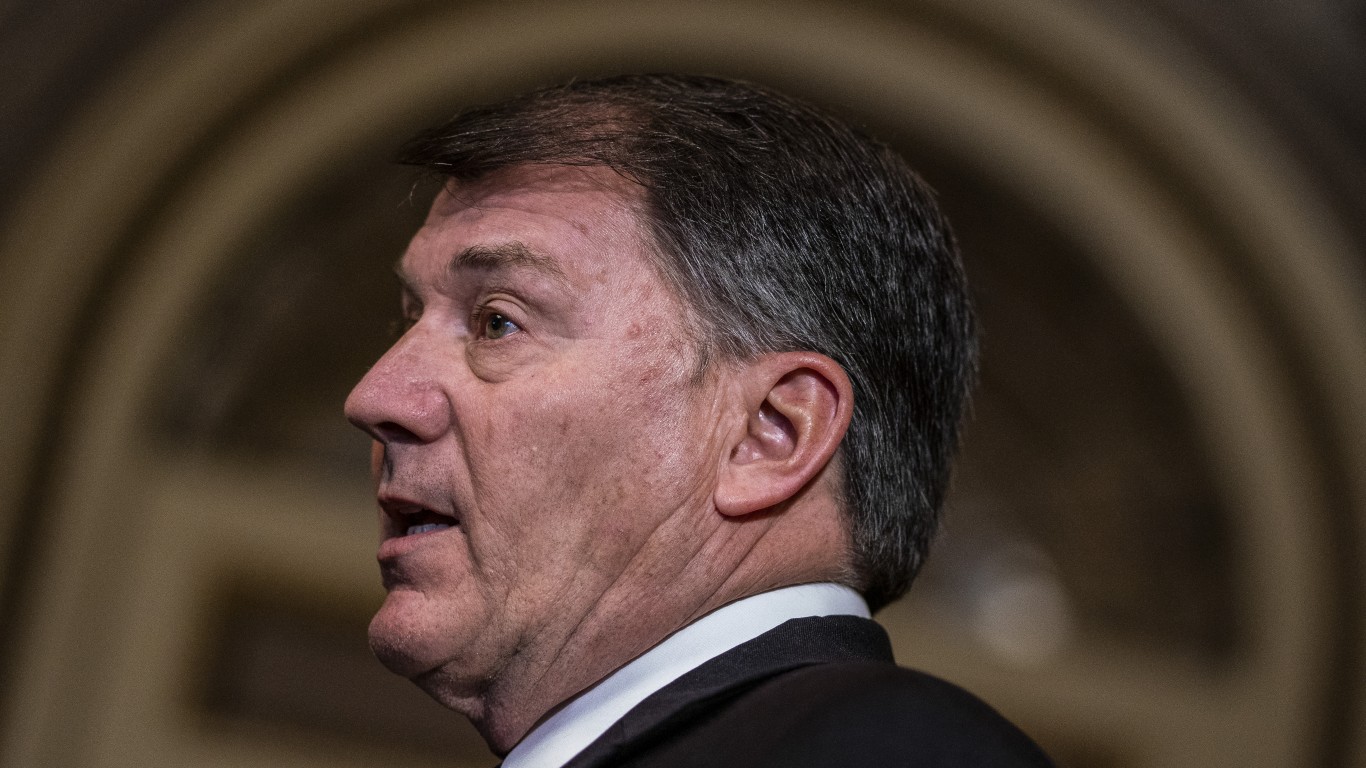
5. Senator Mike Rounds of South Dakota (R)
> 1-yr. change in approval rating: +7 pct. points
> Q1 2022 popularity: 61% approve; 28% disapprove
> Q1 2021 popularity: 54% approve; 36% disapprove
> Current term ends: 2027
> Nov. 2020 voter participation in South Dakota: 57.7% (9th lowest)
4. Senator Alex Padilla of California (D)
> 1-yr. change in approval rating: +9 pct. points
> Q1 2022 popularity: 46% approve; 25% disapprove
> Q1 2021 popularity: 37% approve; 22% disapprove
> Current term ends: 2023 (seeking re-election)
> Nov. 2020 voter participation in California: 55.7% (5th lowest)
[in-text-ad]
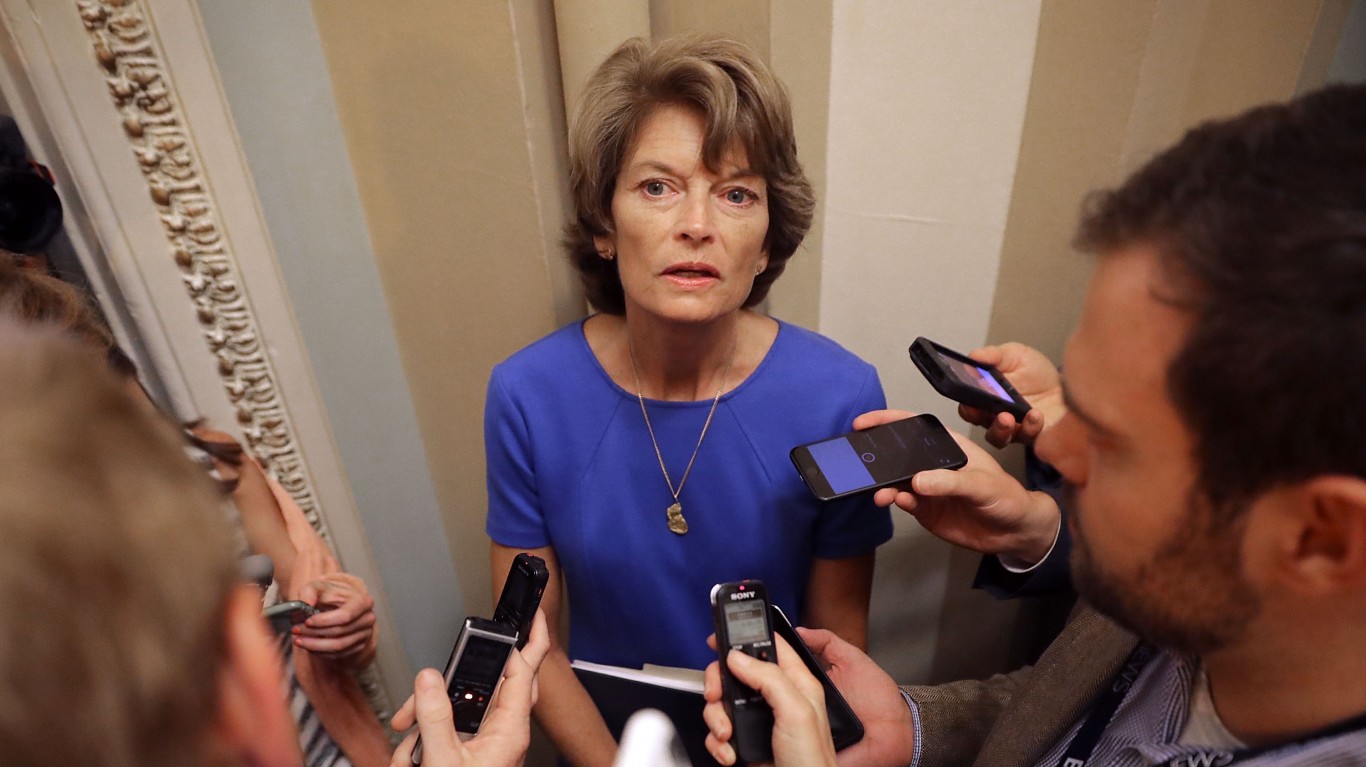
3. Senator Lisa Murkowski of Alaska (R)
> 1-yr. change in approval rating: +10 pct. points
> Q1 2022 popularity: 45% approve; 45% disapprove
> Q1 2021 popularity: 35% approve; 50% disapprove
> Current term ends: 2023 (seeking re-election)
> Nov. 2020 voter participation in Alaska: 62.4% (25th lowest)
2. Senator John Thune of South Dakota (R)
> 1-yr. change in approval rating: +11 pct. points
> Q1 2022 popularity: 62% approve; 28% disapprove
> Q1 2021 popularity: 51% approve; 39% disapprove
> Current term ends: 2023 (seeking re-election)
> Nov. 2020 voter participation in South Dakota: 57.7% (9th lowest)
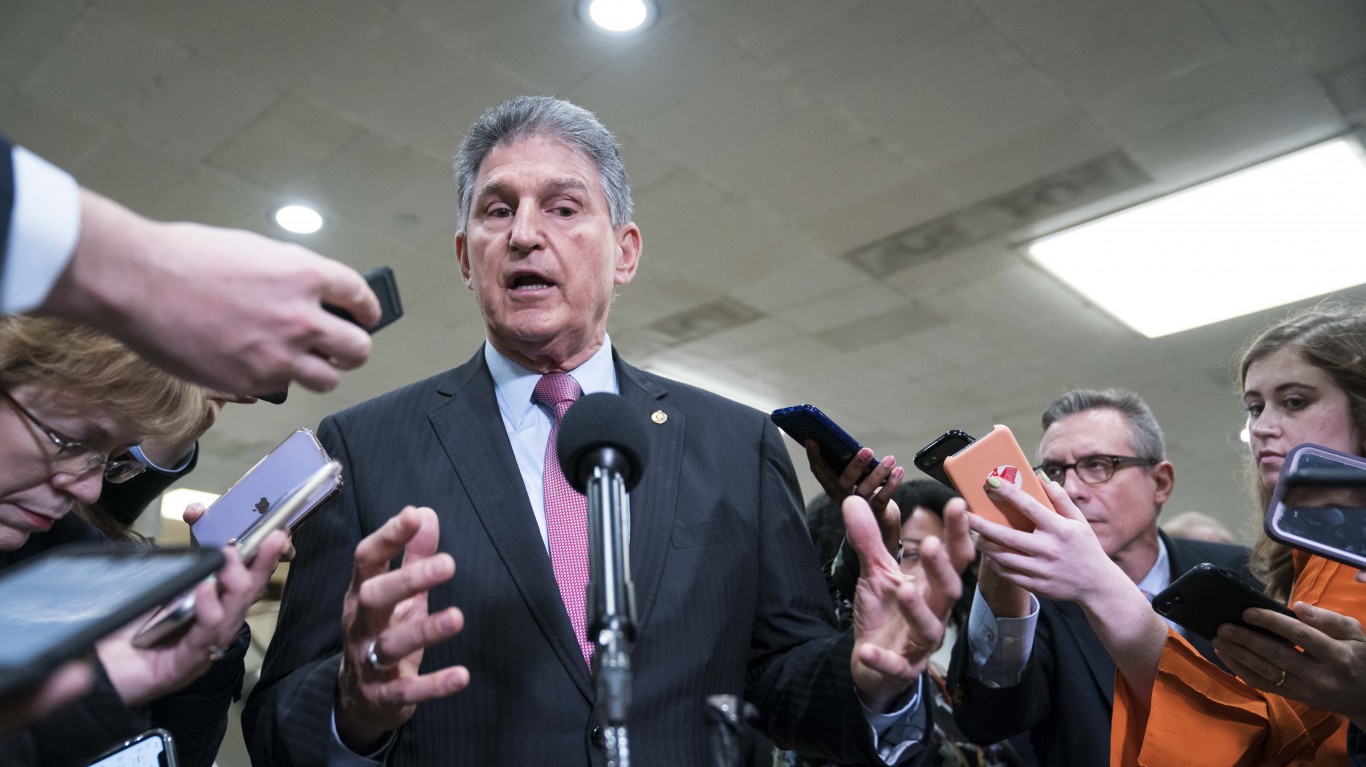
1. Senator Joe Manchin of West Virginia (D)
> 1-yr. change in approval rating: +17 pct. points
> Q1 2022 popularity: 57% approve; 35% disapprove
> Q1 2021 popularity: 40% approve; 51% disapprove
> Current term ends: 2025
> Nov. 2020 voter participation in West Virginia: 55.3% (2nd lowest)
Methodology
To identify the U.S. senators who are gaining in popularity, 24/7 Wall St. reviewed the percentage point change in approval ratings for all 100 U.S. senators from the first quarter of 2021 to the first quarter of 2022 from Morning Consult, a public opinion data research company. Senators are ranked by the one-year change in the share of their constituency who approve of the job they are doing. In cases where two or more senators have the same change in approval rating, the senator from the state where polls were taken from a larger sample size of registered voters ranks higher.
All polling data was collected among registered voters in the state represented by the senator in question in the first quarter of 2021 and 2022. Approval ratings in this publication are rounded figures and may not exactly match those reported by Morning Consult.
We also reviewed the share of voters who participated on election day in 2020 from the U.S. Census Bureau’s Current Population Survey.
Thank you for reading! Have some feedback for us?
Contact the 24/7 Wall St. editorial team.
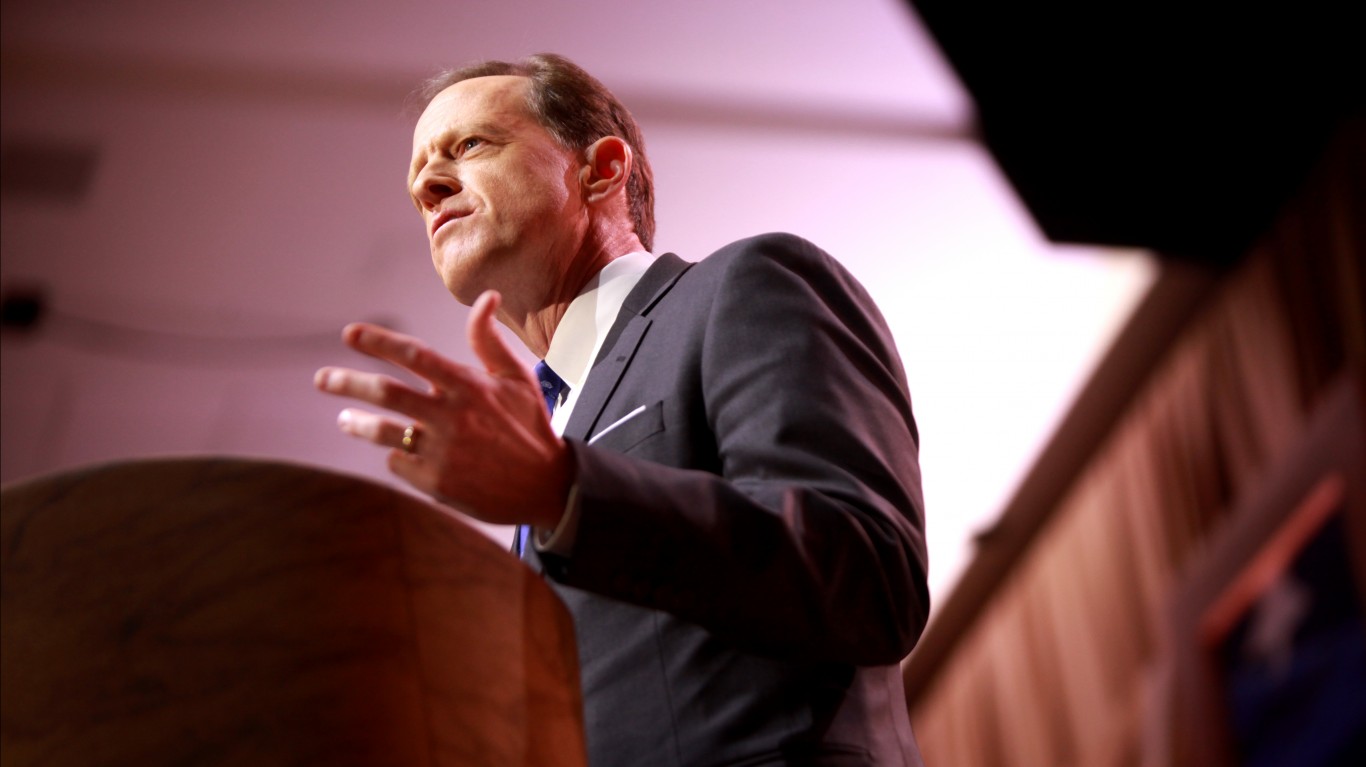
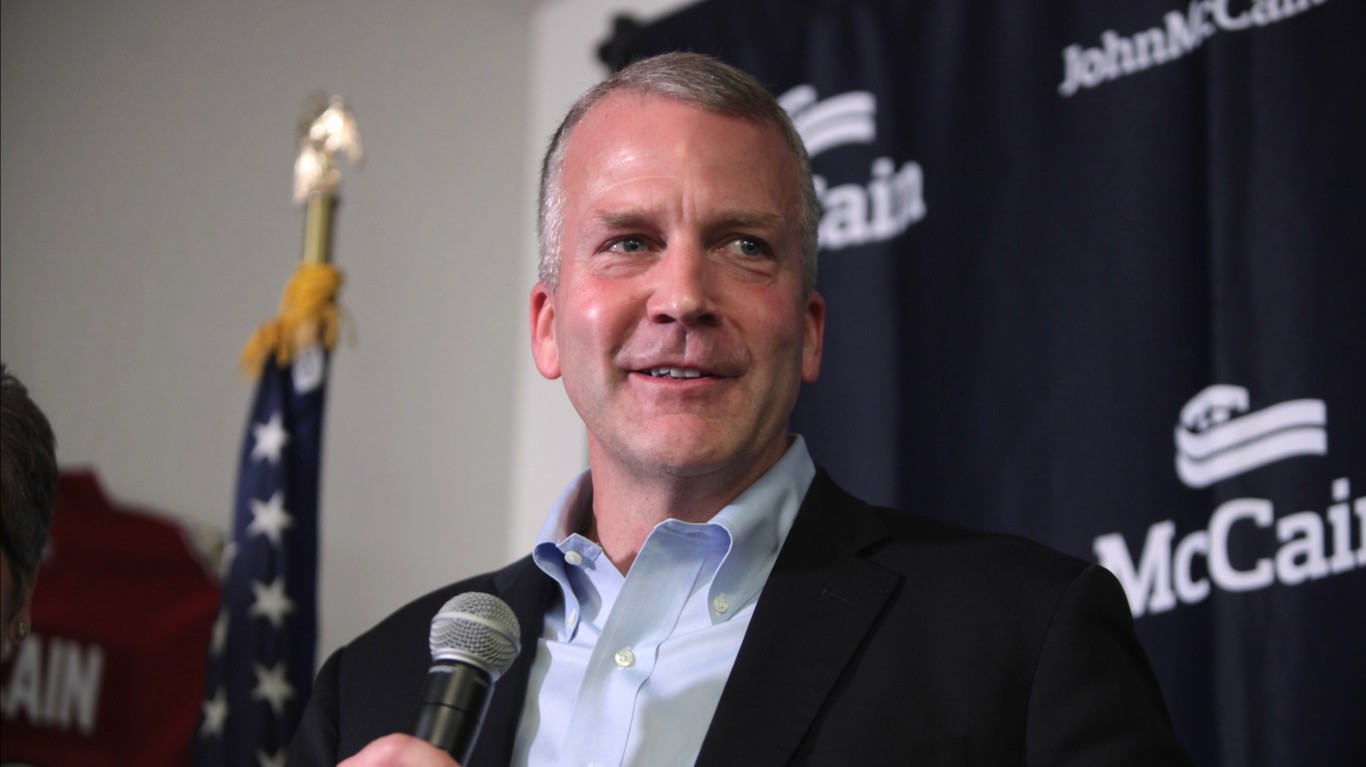
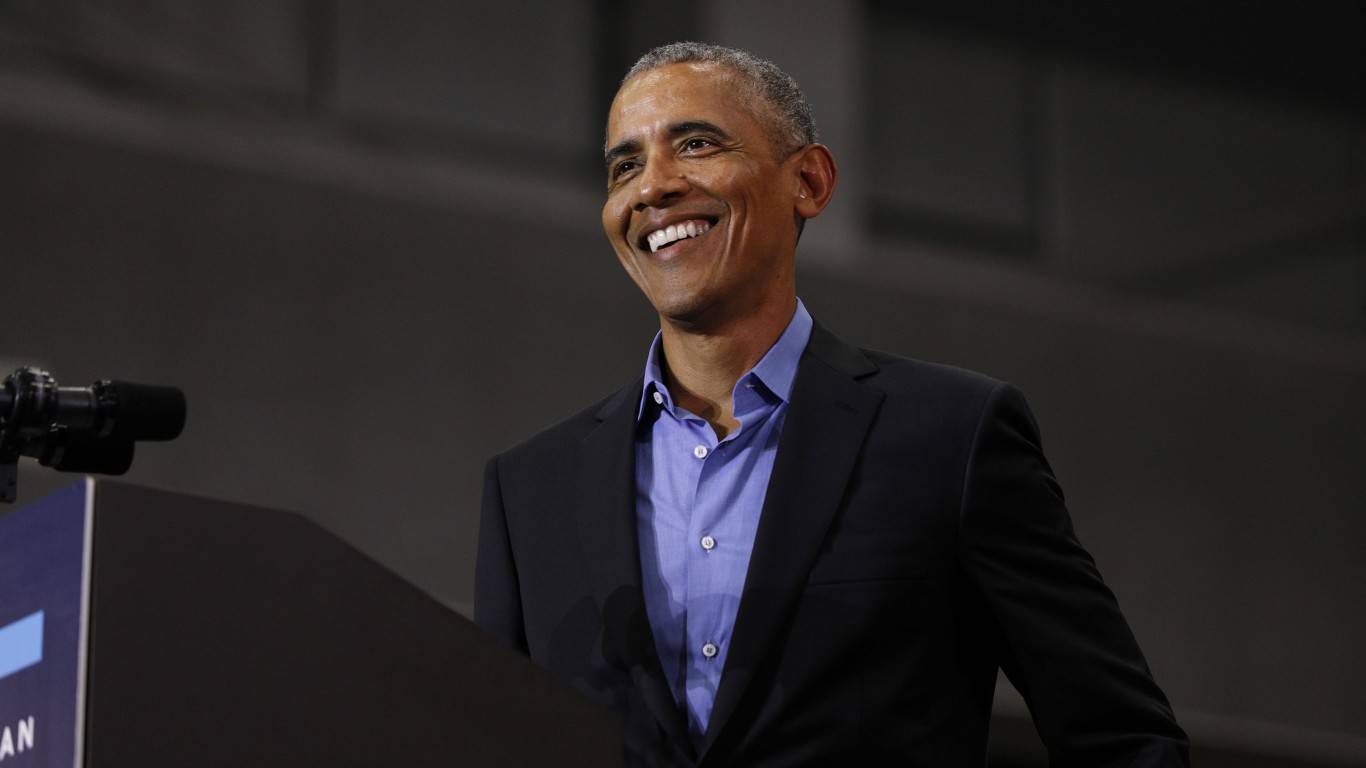 24/7 Wall St.
24/7 Wall St.
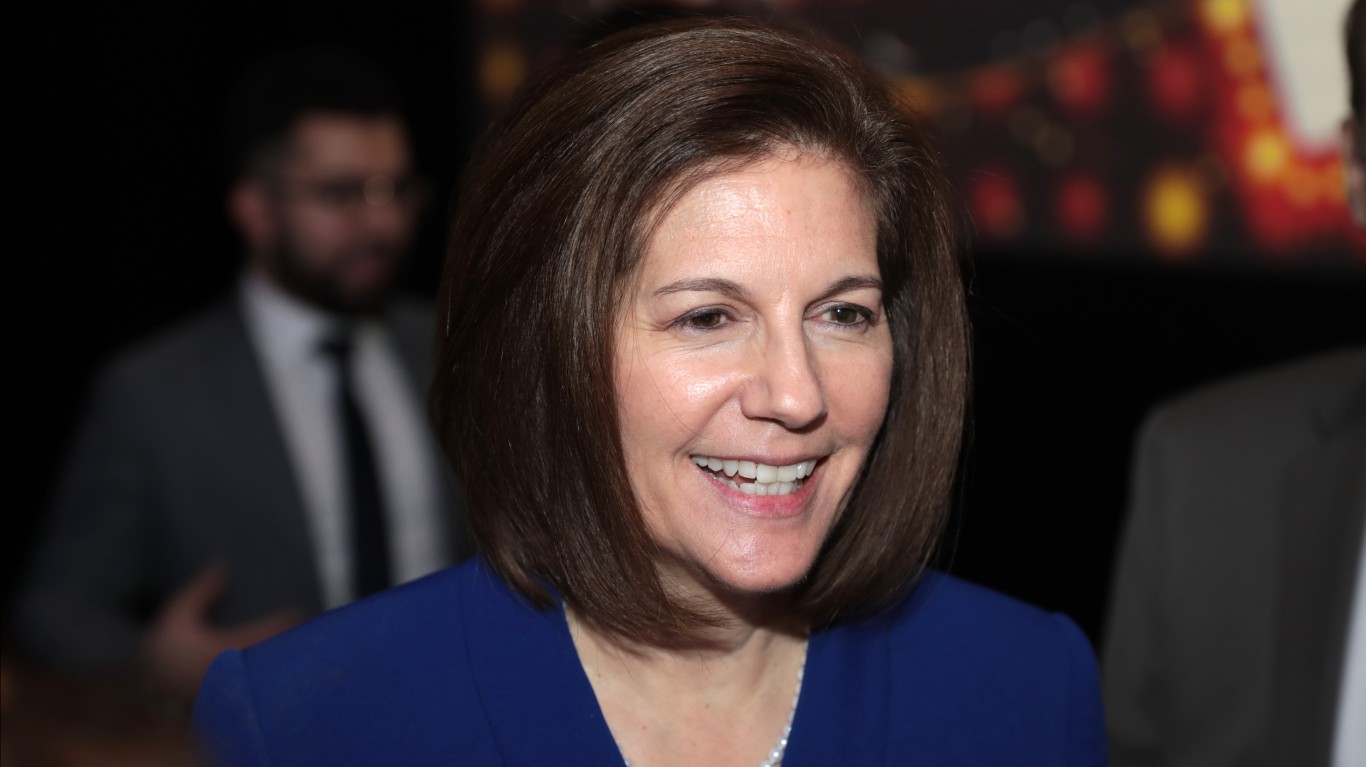
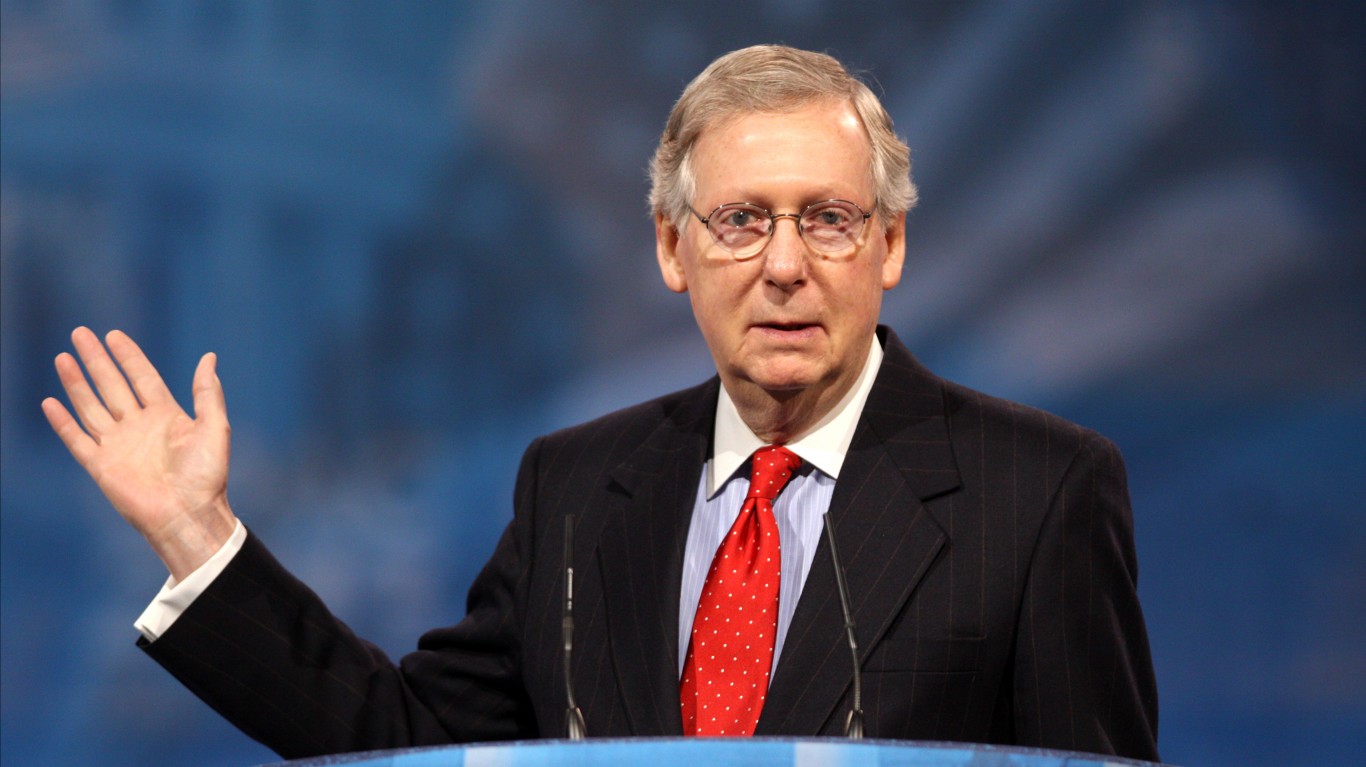
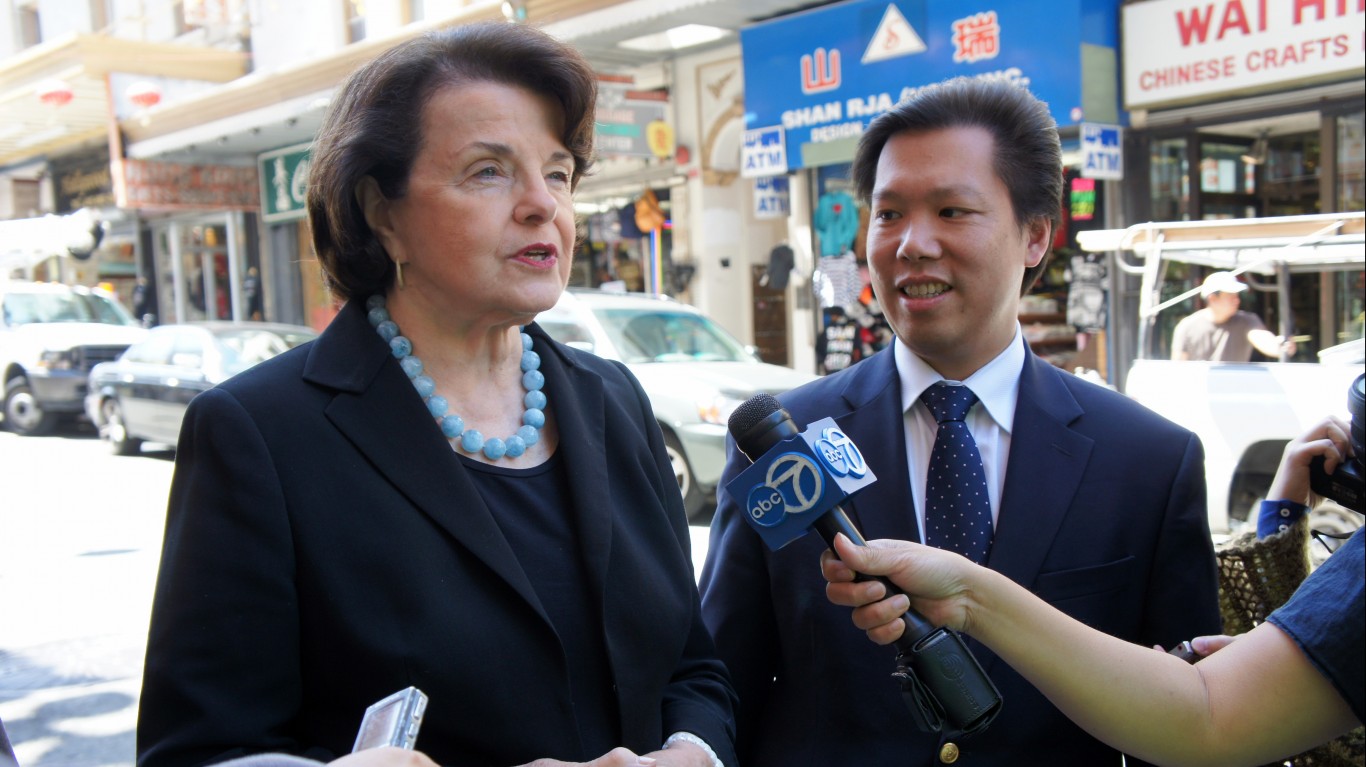

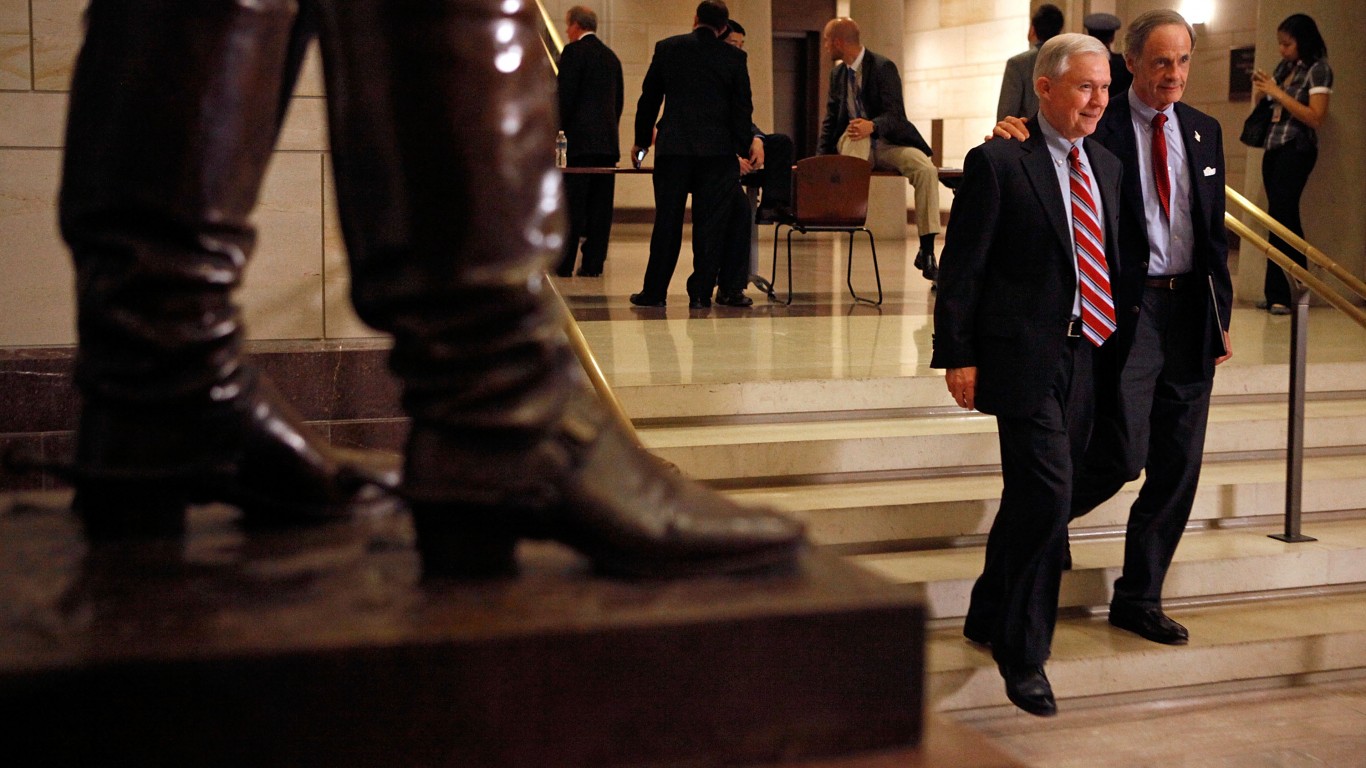 24/7 Wall St.
24/7 Wall St.